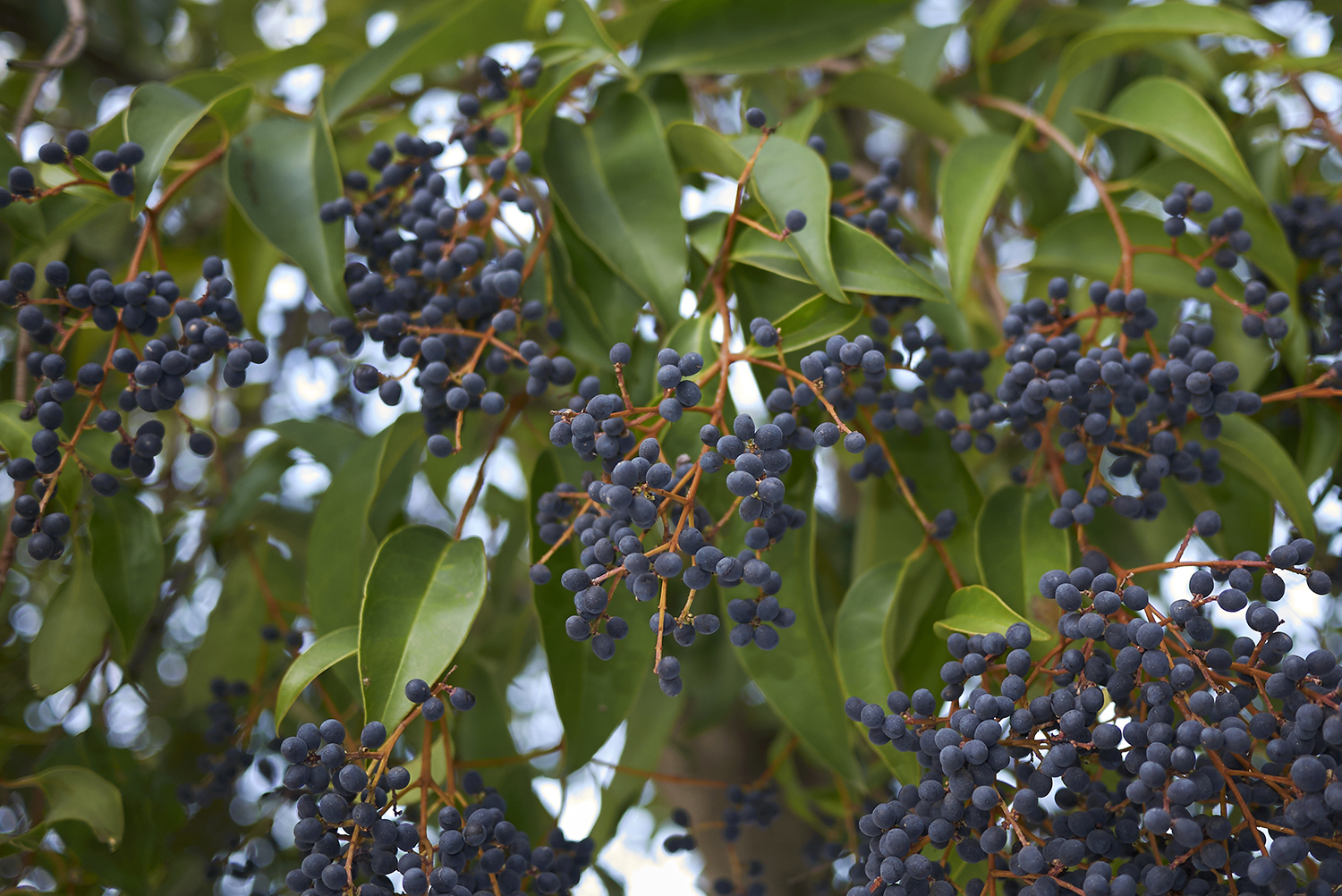Privet is often used to plant hedges for privacy instead of fences. I used to watch the birds flit in and out of my parents privet hedge in Louisiana. However, not all privets are created the same.
As usual, there are many species of this plant, and some are enjoyed while others cursed. Useful ones include the California privet, L. ovalifolium, which can grow quite tall but is drought and heat tolerant, and the Japanese privet, L. japonicum, that’s an attractive and tough plant good for difficult areas.
Chinese privet, however, is now considered one of the South’s worst weeds (Ligustrum sinense) – worse than kudzu, if you can believe it. This is because it can grow just about anywhere – sun, shade, wet soil, dry soil – you name it. It has a spray of pretty and sweet-smelling white flowers whose pollen bothers some, while its small, blueish-black fruit eaten by birds is spread everywhere, crowding out gardens. As well, the European privet (Ligustrum vulgare) is also considered highly undesirable since it also takes over. Unlike L. sinense, its flowers do not have a sweet fragrance.
And yet, there’s a wonderful privet that the Chinese have long used for medicine, Ligustrum lucidum (Nu zhen zi). Sometimes called Chinese glossy privet (or bright or shiny privet since its leaves are glossy), it is a small, evergreen-like tree in the olive family that is native to China and Eastern Asia also with white flower sprays not unlike lilacs. It is not a scourge at all but actually a highly ancient Taoist longevity tonic. This is quite a different story indeed!
L. lucidum privet fruit nourishes the yin and essence of the liver and kidneys, meaning it cools and moistens heat conditions in both those organs and their affiliated functions. As well, it clears heat rising from deficiency and weakness, often felt in the late afternoon and/or evening. This may or may not be a hot flash but can just occur as feeling hotter during those times, sometimes uncomfortably, even with burning sensations. This heat may even be felt deep in the bones (called steaming bones), while other times it can occur as night sweats.
Specifically, glossy privet fruit improves diminished vision and treats cataracts and black spots before the eyes (for this it’s best if combined with lycii – gou ji zi berries). It also treats tinnitus, dizziness, and a sore low back. It is often combined with he shou wu (Polygonum multiflorum) to treat premature graying hair or to darken graying hair. It’s also used for high blood sugar, cirrhosis, and hyperthyroidism. I also have used it for eczema in those with yin deficiency and it quickly lessens the redness and itching associated with that condition.
For some, it helps immune deficiency and treats various allergic and immune complex conditions. As a yin tonic, it can be used for tuberculosis of the lungs or lymph. While I have read it is useful for brown spots on the skin, I have not yet seen this result.
One of the benefits of shiny privet is that unlike most yin tonics, it isn’t greasy or dampening and so is especially useful in those with poor digestion. However, it should be used with caution if using any form of antidiabetic medication, or if there’s coldness or diarrhea.
To use, dry, crush and powder the L. lucidum berries and make into a tea, tincture, or concentrated extract.
Privet Ripe Fruit (Ligustrum lucidum)
Nu zhen zi (Chinese) Family: Oleaceae
Also named: ligustrum, ligustri, Ligustri lucidi Fructus
Energy and flavors: Neutral-cool, sweet, bitter
Organs and channels affected: Liver, Kidney
Chemical constituents: Oleanolic acid, ursolic acid, mannitol, glucose, fatty oil
Properties and actions: Tonic, diuretic, antibacterial, increases white blood cell count, tonifies Yin, clears Deficiency Heat
Contraindications: Coldness, diarrhea; caution if taking insulin and other anti-diabetics as there may be a synergistic effect leading to hypoglycemia; large doses may cause diarrhea
Dosage: 9-15g; 30-60 drops tincture (1:5 @50%ABV), TID

